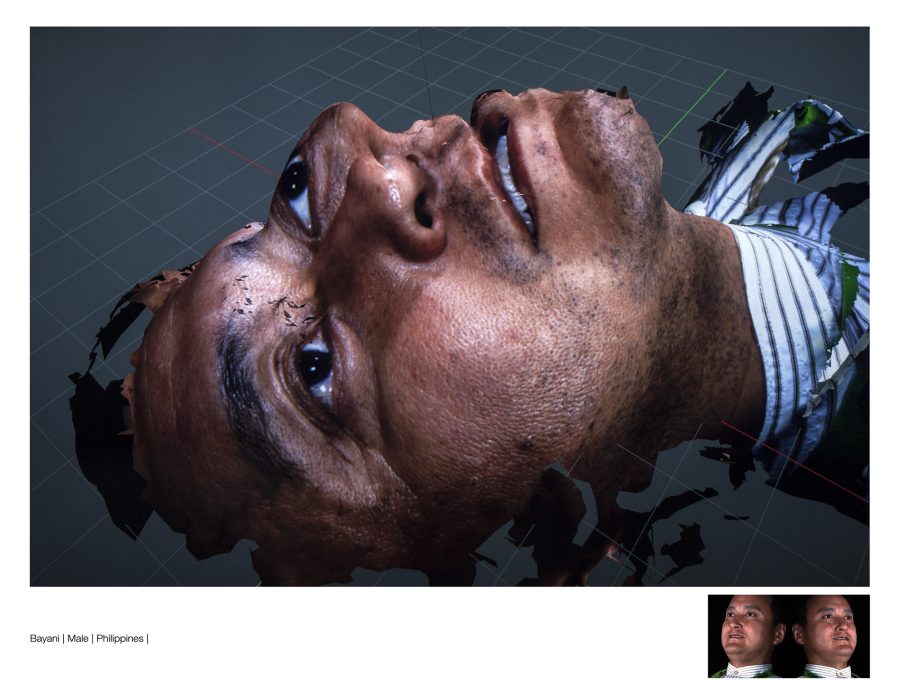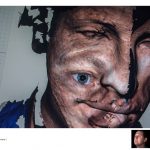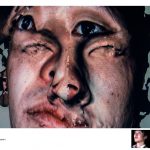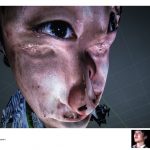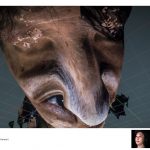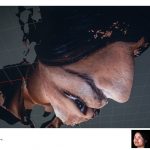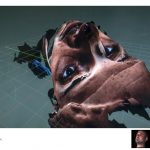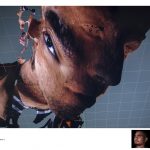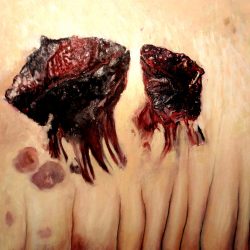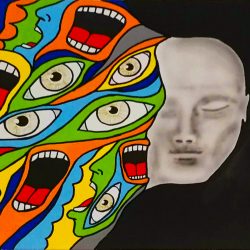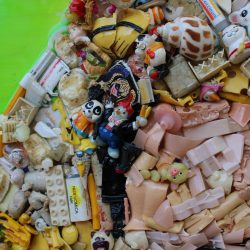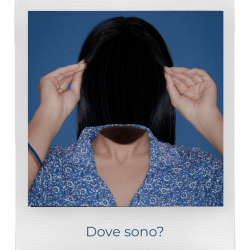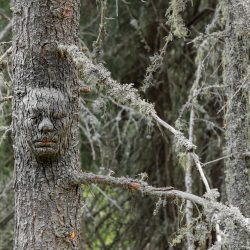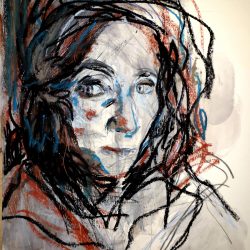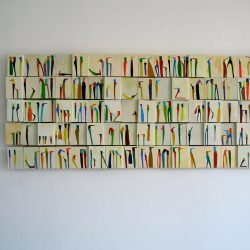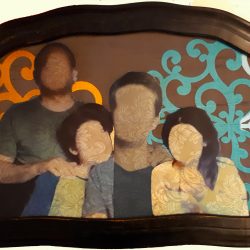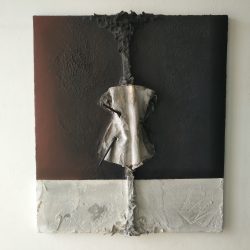work
The Digital Skin Series
| category | Photography |
| subject | Human figure |
| tags | tecnologia, 3d scanning, metafotografia, digital photography, ritratto |
| base | 150 cm |
| height | 115 cm |
| depth | 0 cm |
| year | 2016 |
The Digital Skin Series, 2016. Sublimation print on aluminum. 18 elements. X:150; Y:115 cm, each. Editions of 3.
The Digital Skin Series is composed of self-portraits in which I pose “under the digital skin” of strangers I’ve crossed paths with in the past. To create this series, I first used a 3D scanner to obtain an accurate tridimensional model of my face. Then I used a camera-prototype to acquire HD portraits of strangers. Finally, I applied their portraits to my digital skull as if they were simply an additional layer. The result is a series of photographs where bidimensionality and tridimensionality collide in an intimate and unpredictable way.
In the past, myths about skin were common across cultures and related to radical biological metamorphoses. For example, in the Navajo tradition – which considered the skin a mask – if you were to lock your eyes with those of the skinwalkers, they could project themselves into your body and transform into you. In today’s network society, bodies have left that organic condition and are characterized by transient statuses: individuals have become di-viduals, data aggregates, samples, signals. The last boundary between us and the world, our skin, has become a transient membrane that changes along with the trans- and meta- human forms under it. The space that was occupied by the skinwalkers of the past has been taken over by infinite reconfigurations and mediations. What remains the same is that to be human still means to constantly shift through generative metamorphosis, corruptions, and de-generations that escape any clear categorization.
The Digital Skin Series is composed of self-portraits in which I pose “under the digital skin” of strangers I’ve crossed paths with in the past. To create this series, I first used a 3D scanner to obtain an accurate tridimensional model of my face. Then I used a camera-prototype to acquire HD portraits of strangers. Finally, I applied their portraits to my digital skull as if they were simply an additional layer. The result is a series of photographs where bidimensionality and tridimensionality collide in an intimate and unpredictable way.
In the past, myths about skin were common across cultures and related to radical biological metamorphoses. For example, in the Navajo tradition – which considered the skin a mask – if you were to lock your eyes with those of the skinwalkers, they could project themselves into your body and transform into you. In today’s network society, bodies have left that organic condition and are characterized by transient statuses: individuals have become di-viduals, data aggregates, samples, signals. The last boundary between us and the world, our skin, has become a transient membrane that changes along with the trans- and meta- human forms under it. The space that was occupied by the skinwalkers of the past has been taken over by infinite reconfigurations and mediations. What remains the same is that to be human still means to constantly shift through generative metamorphosis, corruptions, and de-generations that escape any clear categorization.



